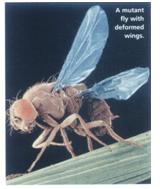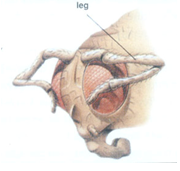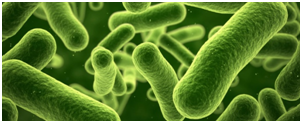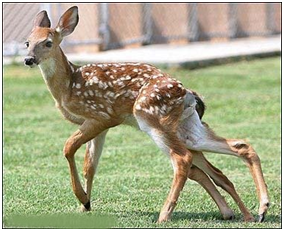Evolutionary Theory and its Adversaries (Part-9)
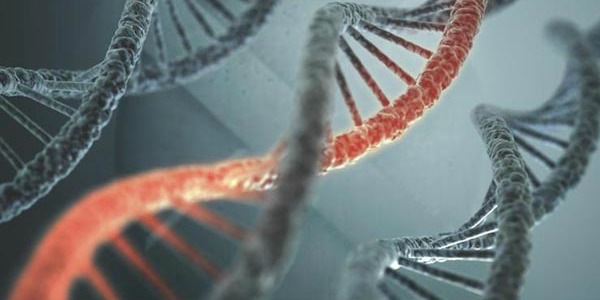
Some leading evolutionary biologists, today, are openly calling for a new theory of evolution because they doubt the creative power of the mutation and natural selection mechanism, writes SYED IQBAL ZAHEER.
By now some what familiar with the subject, and with some idea of the functions of organelles, and specifically, functions of the genes, we could now perhaps dwell into the claims of the evolutionists and see what those scientists have to say who do not agree with their conclusions, and whether they are speaking science, per se, or forwarding scientific ideas, like the evolutionists do – the two being quite different. The difference is that science has data and hard evidences, whereas scientific ideas are guess-works and hypothesis, where, at times, some facts and data are ignored.
We shall not go into great details, for that, one may refer to the works of biologists like Michael Behe, Stephen Meyer, Michael Denton, Anthony O’Hear, and scores of others. They have, systematically, and scientifically refuted the claims of the false prophets and propagandists of Darwinism. They have not tried to prove the existence of God – many of them were atheists – but have simply shown that the arguments in favor of evolution are either on thin ground, scientifically indemonstrable, or outright false, including the ideas of those who used rhetoric to deceive the public and sell their books in millions.
Mutation, a Destructive Phenomenon
Much of the discussions go around mutation, the mainstay of the neo-Darwinian claims. Mutation is permanent alteration of the nucleotides sequence in the genes (the A’s, T’s, C’s and G’s). It happens at the time a gene is being read. At that moment, either it is read in wrong sequence, or is read twice, or its strands are pieced together in wrong order, or an extra strand is added. And it is minor, and, random. Consequently, both occurrence as well as extent, are absolutely unpredictable. The evolutionists never fail to mention its randomness and unpredictability, because they would not like to leave room for an agent, or Agent’s intervention.
The architects of neo-Darwinism working in the 1930s reformulated evolutionary theory to emphasize the importance of mutations as the source of genetic variation. It followed, therefore, that the mutations—which they regarded as the source of heritable variation—must operate on genes. Not knowing the nature of genes, they also assumed that a single mutation could alter a gene in such a way as to produce a new trait. (Darwin’s Doubt, Stephen Meyer, p. 204)
But of course, a single mutation altering a gene can never produce a new trait, say, alter the beak-design of a bird, or increase the neck-length of a giraffe, or the color of a man’s eyes. When the machine copying genes makes an error, or the error is caused by an external factor, e.g. by radiation, or because of any other factor, the resultant change (“mutation” in biological jargon), leads to the following:
- (The mutated) message (RNA) sent to the protein-making machinery (the Ribosome) fails to produce any working protein.
- The harm done can be fatal to the body.
- The gene itself (which is left back in the nucleus), if inherited, has never proven to create a new species; while, mutation is claimed to be all about speciation.
- Mutations are too far spaced in between to be able to accumulate and become an active player towards creating new traits, let alone such changes as larger brains, such as, for instance, between monkeys and humans.
- Any beneficial mutational change goes in parallel with some disadvantage to the biological system.
- Almost universally accepted fact that has emerged from experiments is that gene-alteration through mutation lacks creative power.
- A meaningful mutational change requires “new information.” Biologists on the other hand, can in laboratory experiments induce mutation, but do not know how to insert information. Primarily, scientists know the presence of information in chemical molecules, but have no idea at all where the information comes from.
- In short, micro-evolutionary changes (mutations) have never led to macro-evolutionary changes (e.g. body parts, forms, or species).
The following quotes from the biologists are elaborations of the above points.
Most mutations are harmful. If, for instance, an incorrect amino acid is read, say in a chain 300 amino acids long, it can affect the structure of the resultant protein. A disease called sickle cell is caused by a single change in the hemoglobin gene. It causes the protein to fold incorrectly so that it cannot bind oxygen properly.
The above shows wrong folding of a protein because of mutation
The result of the wrong folding is that the round red blood cells become crescent or sickle shaped. They cannot carry oxygen efficiently, that leads to a disease called sickle cell (hemoglobin). The victim suffers repeated infections and pains.
Yet, the claim of neo-Darwinians has been, for some time, that: organisms with all their complex systems came into existence via natural selection acting on randomly arising, small-scale variations (micro evolution) and mutations.
Pointing out how mutation affects the body, a group of biologists write:
“We agree that very few potential offspring ever survive to reproduce and that populations do change through time, and that therefore natural selection is of critical importance to the evolutionary process. But this Darwinian claim to explain all of evolution is a popular half-truth whose lack of explicative power is compensated for only by the religious ferocity of its rhetoric. Although random mutations influenced the course of evolution, their influence was mainly by loss, alteration, and refinement. One mutation confers resistance to malaria but also makes happy blood cells into the deficient oxygen carriers of sickle cell anemics. Another converts a gorgeous newborn into a cystic fibrosis patient or a victim of early onset diabetes. One mutation causes a flighty red-eyed fruit fly to fail to take wing. Never, however, did that one mutation make a wing, a fruit, a woody stem, or a claw appear. Mutations, in summary, tend to induce sickness, death, or deficiencies. No evidence in the vast literature of heredity changes shows unambiguous evidence that random mutation itself, even with geographical isolation of populations, leads to speciation. Then how do new species come into being? How do cauliflowers descend from tiny, wild Mediterranean cabbage-like plants, or pigs from wild boars?” (Lynn Margulis, Dorion Sagan, Acquiring Genomes: A Theory of the Origins of the Species, (Basic Books, 2003, p. 29)
The fruit fly (Drosophila) – which has helped several scientists win Nobel Prizes – is a popular animal with them. Tens of thousands of experiments have been conducted on this poor animal during last hundred years. Because it has merely four chromosomes, it was the first animal whose Genome was worked out. Perhaps, genetically speaking, it is better understood than man. What have been the results of induced mutations, at the laboratory level? The answer is, entirely destructive to the animal.
Mutation at the genetic level in a fruit fly resulted in a creature with an extra pair of wings, impeding its ability to fly.
But it is not simply the problem of mutations causing harm, it is also that they occur so rarely. That is, if at all mutation occurs, it is not fast enough to have any effect on the body, even if the changes are passed on to following generations. Getting newer genes is all the more difficult. Some scientists have calculated that because of slow rate of random mutation, it could take several billion years to get a single good working gene:
And one of those problems is that the neo-Darwinian mechanism does not act quickly enough to account for the explosive appearance of new fossil forms in the Cambrian period. Like allopatric speciation, species selection does not qualify as the kind of rapid and flexible mechanism that Gould elsewhere insisted his theory must have in order to explain the abrupt appearance of animal forms in the fossil record. (S. Meyer, P. 134)
Mutation at the Chromosome level
Alternatively, mutations can also occur at the chromosome level, leading to big genetic changes, all of a sudden, at one go (in biological terms, the macro-evolutionary alteration). If it happens in the sex cells, say, an extra chromosome is added, the change is inherited by the offspring.
As evolutionary geneticists Bernard John and George Miklos explain, “macro-evolutionary change” requires changes in “very early embryo genesis.”Former Yale University evolutionary biologist Keith Thomson concurs: only mutations expressed early in the development of organisms can produce large-scale macro-evolutionary change.
However, this too has disastrous effects on the body. One such chromosomatic change results in what is known as Down’s syndrome. This is a serious disorder. The victim suffers diminutive height, a large head, as well as intellectual impairment.
A Victim of Down’s Syndrome
The Undefeatable Genes
To paraphrase Behe from his The Edge of Evolution:
Studies of malaria provide our best data about what Darwinian evolution can do … HIV is spread from person-to-person contact, so it can survive in mild and even cold climates… HIV is a virus, one of the simplest forms of life … Its genome (the body of genes) is about one-millionth the size of the human genome. The amount of genetic information in the AIDS virus is less than a thousand the amount of DNA in malarial parasite. It can mutate much more readily than cells do – about ten thousand times faster. The virus is so small, and the mutation rate is so great, that on average each new copy of the virus contains one change, one mutation, from its parent. It mutates at the evolutionary speed limit – Darwinian evolution just can’t go any faster, leads us to wonder why “the ten thousand times” faster mutation has not been able to give the genetic code of the virus a single new, working gene!
An Aids Virus
In Behe’s words again:
“Over the years its (Aid’s virus) DNA sequence has certainly changed. HIV has killed millions of people, fended off the human immune system, and become resistant to whatever drug humanity could throw at it. Yet through all that, there have been no significant basic biochemical changes in the virus at all.” (The Edge of Evolution, Michael Behe, p.139)
And,
“The largest, most ambitious, controlled laboratory evolutionary study was begun more than a decade ago in the laboratory of Professor Richard Lenski at Michigan State University. Lenski wanted to follow evolution in real time. He started a project to watch the unfolding of cultures of the common gut bacterium Eschrichia coli. E. coli is a favorite laboratory organism that has been studied by many scientists for more than a century. The bug is easy to grow and a very short generation span of as little as twenty minutes under favorable conditions…
“But what does it yield? In the early 1990s Lenski and coworkers began to grow E. coli in flasks; the flasks reached their capacity of bacteria after about six or seven doublings. Every day he transferred a portion of the bugs to a fresh flask. By now [2007] over thirty thousand generations of E coli, roughly the equivalent of a million years in the history of humans, have been born and died in Lenski’s lab. … Nothing fundamentally new has been produced. No new protein-protein interactions, no new molecular machines.” (The Edge of Evolution, Michael Behe, p.141-42)
The E-Coli Bacteria
And,
“Murray Eden showed that it would be impossible for even a single ordered pair of genes to be produced by DNA mutations in the bacteria, E. coli,—with 5 billion years in which to produce it! His estimate was based on 5 trillion tons of the bacteria covering the planet to a depth of nearly an inch during those 5 billion years. He then explained that the genes of E. coli contain overa trillion (1012) bits of data. That is the number 10 followed by 12 zeros. Eden then showed the mathematical impossibility of protein forming by chance. He also reported on his extensive investigations into genetic data on hemoglobin (red blood cells).
The large majority of evolutionists at the (Chicago) conference agreed that the neo-Darwinian mechanism of mutation and natural selection could no longer be regarded by professionals as scientifically valid or tenable. Neither the origin nor the diversity of living creatures could be explained by evolutionary theory. Newsweek, November 3, 1980 (Darwin’s Doubt)
Complications in Gene Duplication
Another compacting device, which has been shown to be utilized in living systems and which again has no strict analogy in our own technology, is the use of the breakdown products of proteins to perform all sorts of functions often quite unrelated to the original function of the “mother” protein. Thus, many protein functions are compacted into an original molecule. The process begins by the synthesis of the original protein which, after performing its function, is broken down in the cell into two smaller proteins, each of which performs two further functions. These two proteins are again broken down into still smaller proteins capable of yet further functions. The device is some what analogous to having a whole tool kit compacted within the first tool we require to initiate a particular operation; and when the initial operation is complete, the tool breaks down into the next two tools required for the operation, and so on until the operation is complete. (Evolution, a Theory in Crisis, Michael Denton, P. 337)
The Invincible Genes
…Trypanosomes [are] small eukaryotic parasites that in Africa cause sleeping sickness in humans and some animals. The animal responds by producing special protein molecules—antibodies that bind to the coat of the parasite and stop its growth…. But when the antibodies have almost gained control, parasites with a different coat make their appearance…. When the new antibodies are produced, the second wave of parasites disappear, but yet another kind emerges, with coat molecules different from the first two.
A large number of technical articles and books have appeared which cast newer doubts on the creative power of mutation and selection mechanism. These doubts keep coming up at such regular pace that evolutionary theorist are forced to assure the public that ‘if we do not know how to answer, does not mean there is no answer.’
In fact, as Meyer has said, some leading evolutionary biologists are now openly calling for a new theory of evolution because they doubt the creative power of the mutation and natural selection mechanism. (Darwin’s Doubt, p.7, electronic version)
Micro and Macro Evolution
As a host of distinguished biologists have explained in recent technical papers, small-scale, or “micro-evolutionary,” change cannot be extrapolated to explain large-scale, or “macro-evolutionary,” innovation.For the most part, micro-evolutionary changes (such as variation in color or shape) merely utilize or express existing genetic information, while the macro-evolutionary change necessary to assemble new organs or whole body plans requires the creation of entirely new information. As an increasing number of evolutionary biologists have noted, natural selection explains “only the survival of the fittest, not the arrival of the fittest.”The technical literature in biology is now replete with world-class biologists routinely expressing doubts about various aspects of neo-Darwinian theory, and especially about its central tenet, namely, the alleged creative power of the natural selection and mutation mechanism. (p.8, ibid)
Example of a Mutation Gone Awry
The Impossible Numbers
Darwin conceded that the beneficial variations responsible for permanent change in species are both rare and necessarily modest. Major variations in forms, what later evolutionary biologists would term “macro mutations,” inevitably produce deformity and death.
How difficult would it be for random mutations to generate, or stumble upon, the genetically meaningful or functional sequences needed to supply natural selection with the raw material—the genetic information and variation—it needed to produce new proteins, organs, and forms of life? Eden wasn’t the only mathematician or scientist asking these questions. But the mathematically based challenge to evolutionary theory that he helped to initiate would indeed prove dangerous to neo-Darwinian orthodoxy.
As the length of the required protein grows, the number of possible amino-acid combinations mushrooms exponentially. As this happens, the probability of ever stumbling by random mutation onto a functional sequence rapidly diminishes.
Most genes—sections of DNA that code for a specific protein—consist of at least one thousand nucleotide bases. That corresponds to 41000 —an unimaginably large number—possible base sequences of that length. Moreover, it takes three bases in a group called a codon to designate one of the twenty protein-forming amino acids in a growing chain during protein synthesis. If an average gene has about 1000 bases, then an average protein would have over 300 amino acids, each of which are called “residues” by protein chemists. And indeed proteins typically require hundreds of amino acids in order to perform their functions.
This means that an average-length protein represents just one possible sequence among an astronomically large number—20300. Putting these numbers in perspective … there are 1080 elementary particles in the known universe. (Darwin’s Doubt, P. 151-156)
A Start with Genes is a Wrong Start
It is naïve to assume that there are independent genes for each and every characteristic that have accumulated through past episodes of natural selection. The nature of biology is such that the basis of individuality is largely uncapturable, making all talk of evolutionary origins of the unknown premature at best and vacuous at worst .. Selection is not a process as such with predictable outcomes based on fixed, selective ‘power’ of individual genes controlling aspects of phenotypes. Selection involves whole phenotypes, which are in part influenced by their unique combination of genetic interactions, hence, evolution involves descent with modification of genetic interactions. Genetic interactions are, genotypic, not phenotypic. Advocacy of the gene as the unit of selection is operationally incoherent and genetically misconceived. (Gabriel Dover as quoted in What Darwin got Wrong, p. 25-6, Gerry A. Fodor & Massimo P-P, Profile Books, 2011)
(To be Concluded)


